 Here Are Some Adrenaline Pumping Experiences From Auto Expo 2025 That You Should Not Miss!
Here Are Some Adrenaline Pumping Experiences From Auto Expo 2025 That You Should Not Miss!
 Auto Expo 2025: Top 10 Highlights From Bharat Mobility Global Expo 2025
Auto Expo 2025: Top 10 Highlights From Bharat Mobility Global Expo 2025


While most manufacturers in India are scrambling down the price chain, Hyundai has been going against the tide. The brand has set its sights on more premium segments. It started off with the Elite i20, which offered a combination of quality and design that we’d never really seen in the segment before. They followed it up with the Creta and the new-gen Elantra, which continue to take the game into more premium spaces, and now we’ve got this – the Tucson, one of Hyundai most widely mispronounced model names (pronounced ‘too-sau’) and the missing link in the brand’s line-up between the Creta and Santa Fe.
Was this a gap that needed to be filled and, more importantly, has it been done right?
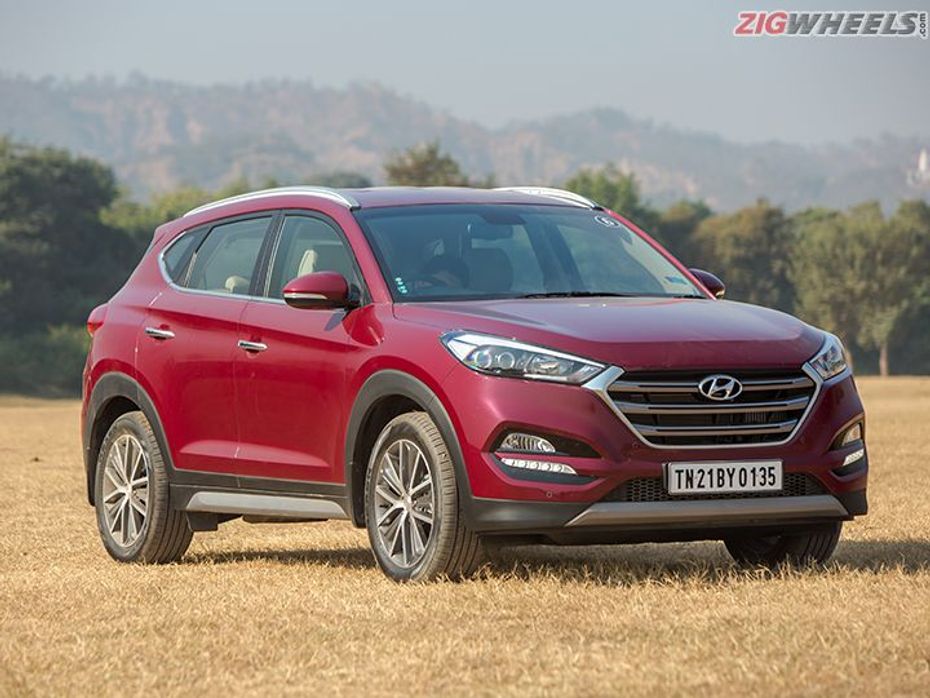
Design and Styling
Everyone has their baggage and for the Tucson, it’s the awkward styling of both its predecessors – the 1st gen that was sold in India and the 2nd gen a.k.a the ix35 that wasn’t. One look at this new SUV, though, and you know that Hyundai went back to the drawing board. It follows the Fluidic 2.0 design architecture so the looks are anything but understated. The signature hexagonal grille highlights the front and is flanked by plus-sized headlamp clusters that feature dual-barrel LEDs and LED pilot lights. Even the foglamp housing is aggressively contoured with the DRLs slitting it in the middle.

The side profile looks particularly sporty, thanks to the ‘kick up’ window line and shoulder line. Opt for the automatic variant and you get a slick set of ‘diamond cut’ 18-inch wheels too. At the back, the LED tail lights look a lot like the Elite i20’s, and the derriere doesn’t look ‘bumper heavy’ like the Creta, thanks to the rear fog lamps, skid plates (diesel only) and dual tailpipes that cut the bulk.
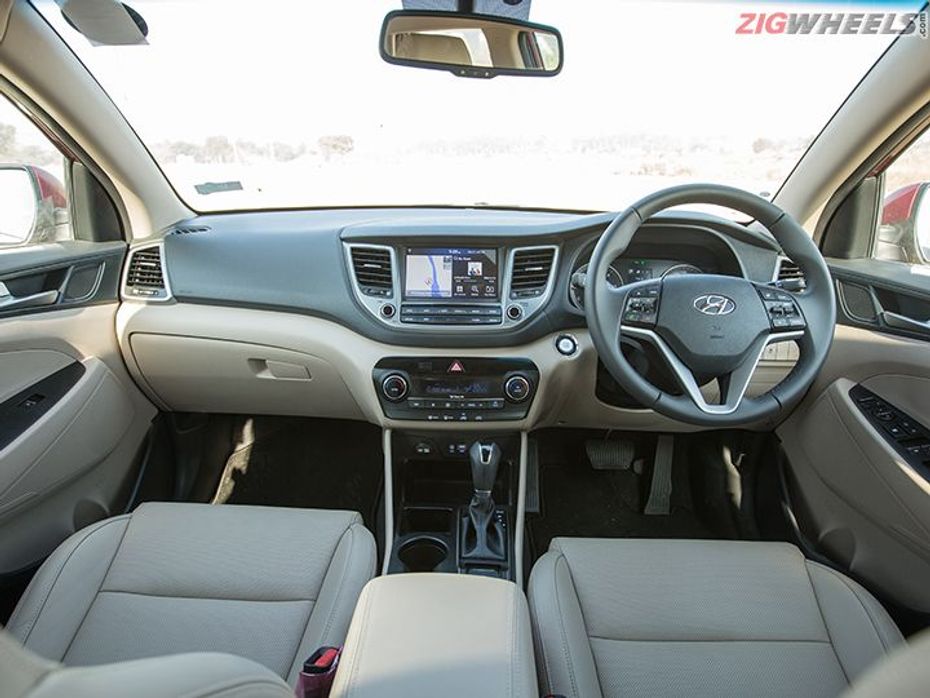
Interior
Build quality is quite solid, but step into the cabin and you’re faced with a rather unique let-down. The Elite i20 won us over with the cabin’s layout and superior quality. While that’s impressive, it makes you expect so much more from a 25-lakh rupee Hyundai. Unfortunately, the Tucson’s cabin lacks that wow factor, which is a bit disappointing considering the flamboyant exterior.
It is, however, a very ergonomic arrangement and you do get that must-have commanding driving position of an SUV. The cockpit is highlighted by an easy to read instrument cluster that includes a 4.2-inch LCD multi-information display. The trim is finished immaculately and quality is top-notch overall. Soft-touch plastics and silver accents bump up the snob-factor and, as you’d expect from a Hyundai, the feature kitty is juicy.

However, you can tell that the manual variant plays second fiddle since it’s essentially a base grade. While the automatic variants get leather seats, the manual gets cloth. Both versions get hide on the steering, gear lever and armrest, but only the 2-pedal Tucson gets a 10-way electrically adjustable driver’s seat. Even a novelty feature like the compass on the auto-dimming interior rear-view mirror is limited to the AT grades, not to mention, the MT doesn’t even get a smart key, push-button starter or rear AC vents!
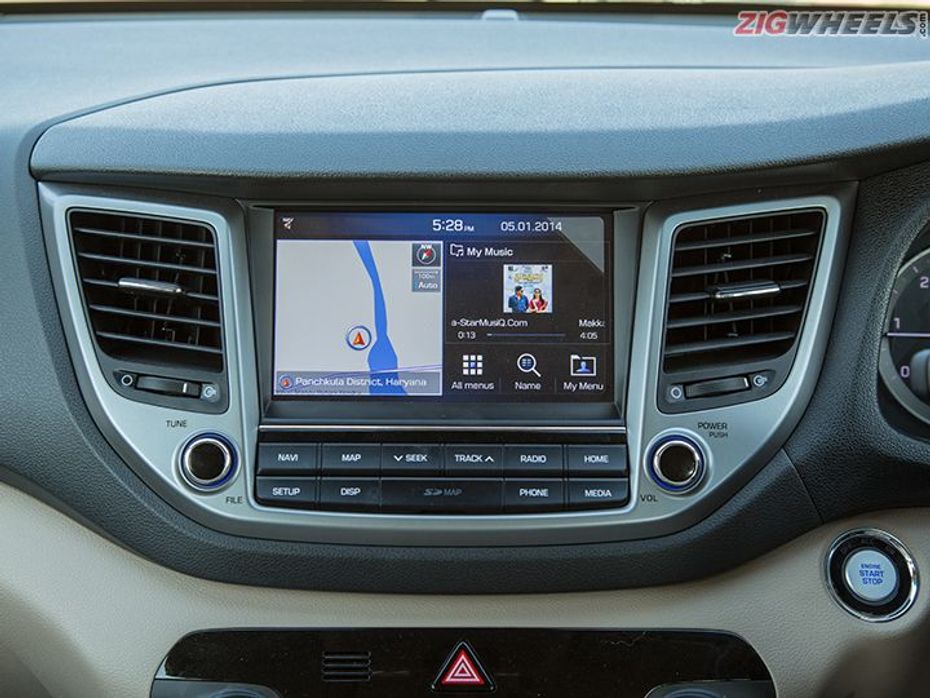
That said, the 8-inch touchscreen AVN system comes as standard and gets both Apple CarPlay and Android Auto, apart from the usual Bluetooth, AUX and USB options. The screen is large enough to use on the move and the touch-sensitivity is good, but there’s definitely some noticeable lag. The steering is adjustable for both rake and reach; the glovebox is cooled; the seatbelts and headrests are adjustable and you get cruise control too. With the features, Hyundai has been selective, but not stingy, though some will be miffed at the missing sunroof and ventilated seats – even the Elantra gets these.
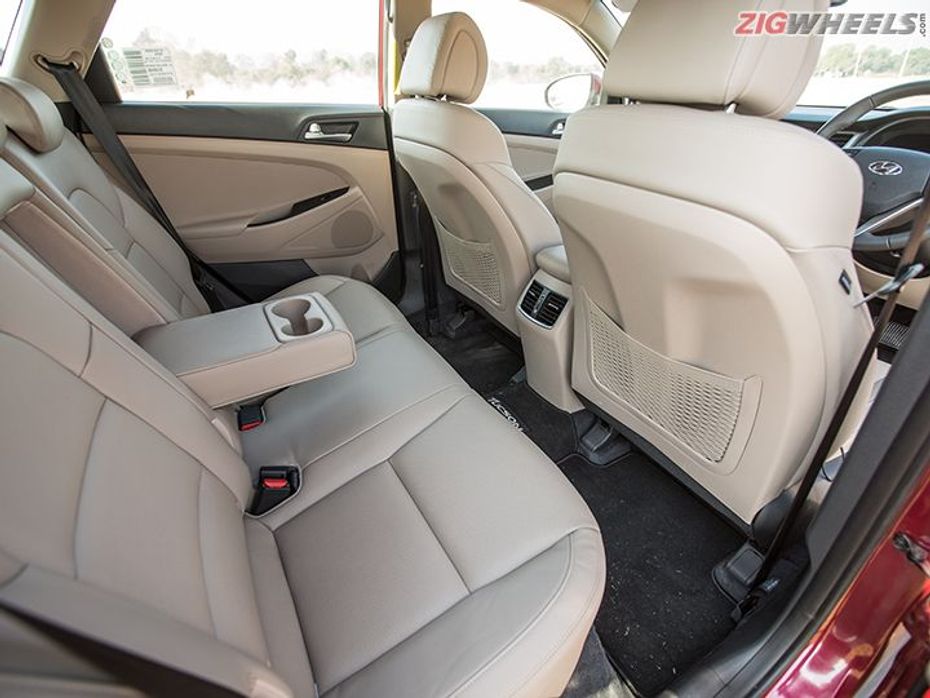
Getting into the SUV isn’t too daunting because the floor-line isn’t too high, though older folks will have to put in a little effort. Yes, there’s adequate space for 5 adults and the rear seats can be reclined too. All the seats provide adequate overall support, but the middle passenger won’t be comfortable. The rear AC vent console is intrusive, while the front seats have hard plastic at the back, so there’s no cushioning for your knees if you’re tall. The rear armrest also juts out a fair bit when folded in, so the backrest isn’t comfortable for the middle occupant either.
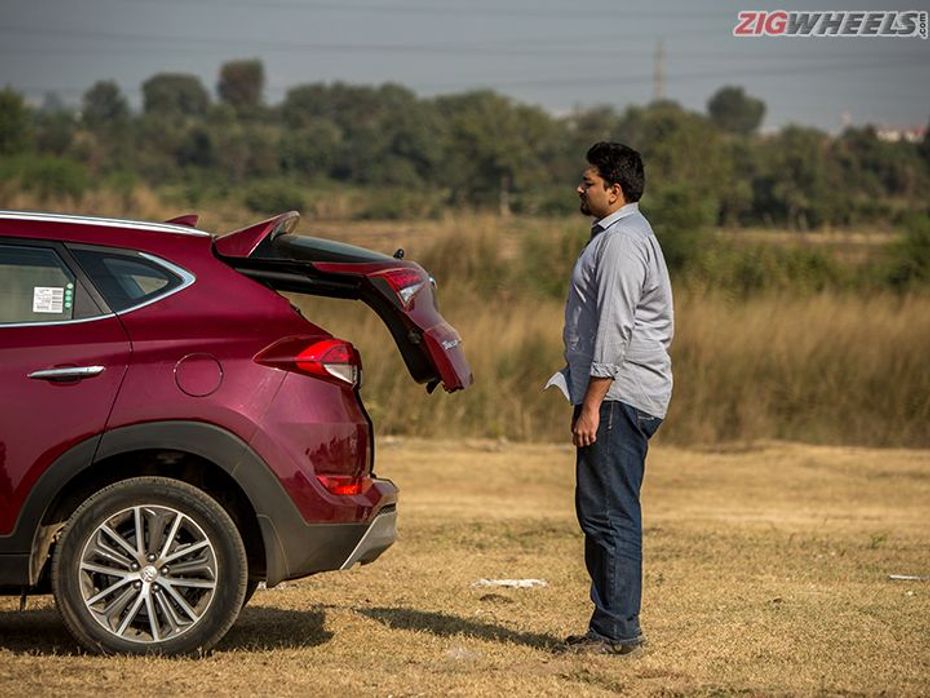
It’s, however, a practical cabin and apart from storage in the doors, you do get seatback pockets, storage under the front armrest, while the rear seat folds 60:40 too. There are a borderline ridiculous number of options to access the well-sized boot. You can hit a button on the dash/tailgate; press and hold the button on the key fob; or just stand behind the car with the key in your pocket for a few seconds and it opens automatically. The tailgate also comes with anti-pinch and you can even choose a pre-set height for it to open up to.
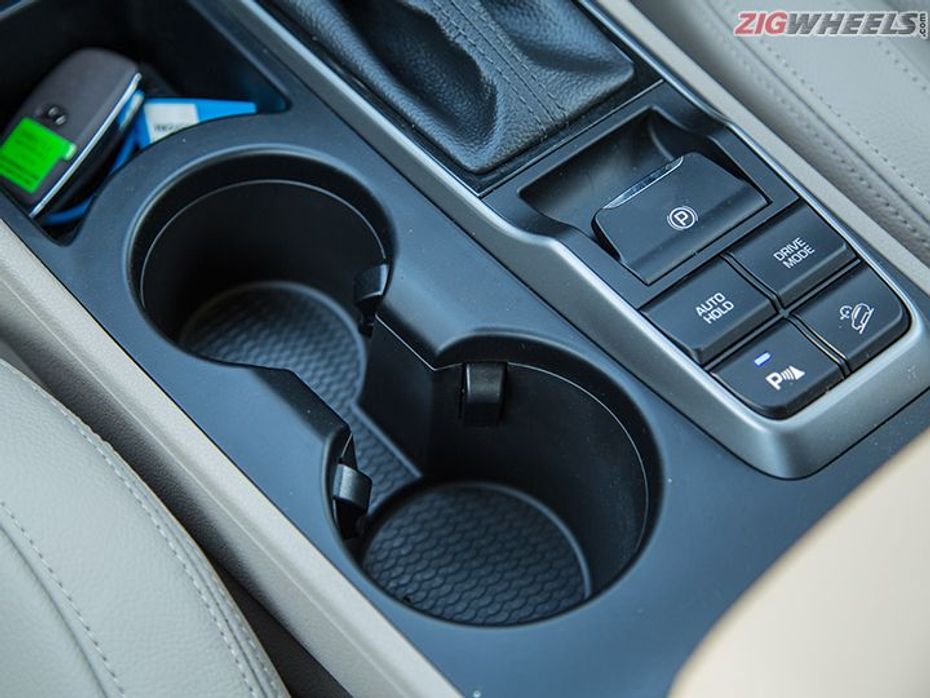
Safety
For safety, dual airbags, ABS with EBD, ISOFIX, rear parking sensors and a rear camera come as standard. While the AT ‘GL’ variant gets front parking sensors plus side and curtain airbags too, only the range-topping ‘GLS’ grade gets ESC, vehicle stability management, brake-assist, hill-hold and hill-descent control.
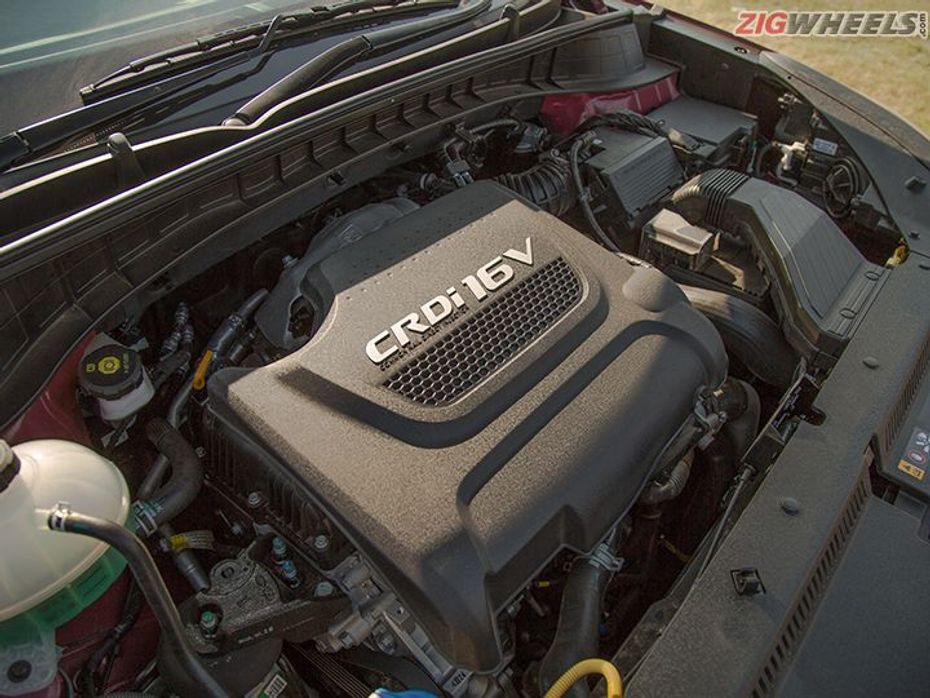
Diesel Drive
Hyundai has also played it relatively safe with the powertrains. The petrol mill is the same ‘Nu’ 2.0-litre unit you get in the Elantra and in a slightly higher state of tune. Ironically the actually ‘new’ engine here, and the one we’ve driven, is the 2.0-litre ‘R’ diesel that makes 185PS and 400Nm.
Hyundai has made NVH a top priority and it shows. The all-aluminium engine has had its block shaved down to make it lighter and refinement levels are impressive. However, you can still tell it's a diesel since there is some audible clatter. Being a diesel, you also get the benefit of great low-end torque and while the power peaks quite high into the rev-range, the 400Nm of twisty goodness is delivered from as low as 1,750rpm. It is a rev-happy engine, but slamming the pedal isn’t the way to use it. Part throttle is good enough to get you into triple digit speeds in no time and getting too pedal heavy just results in wasteful torque-steer.
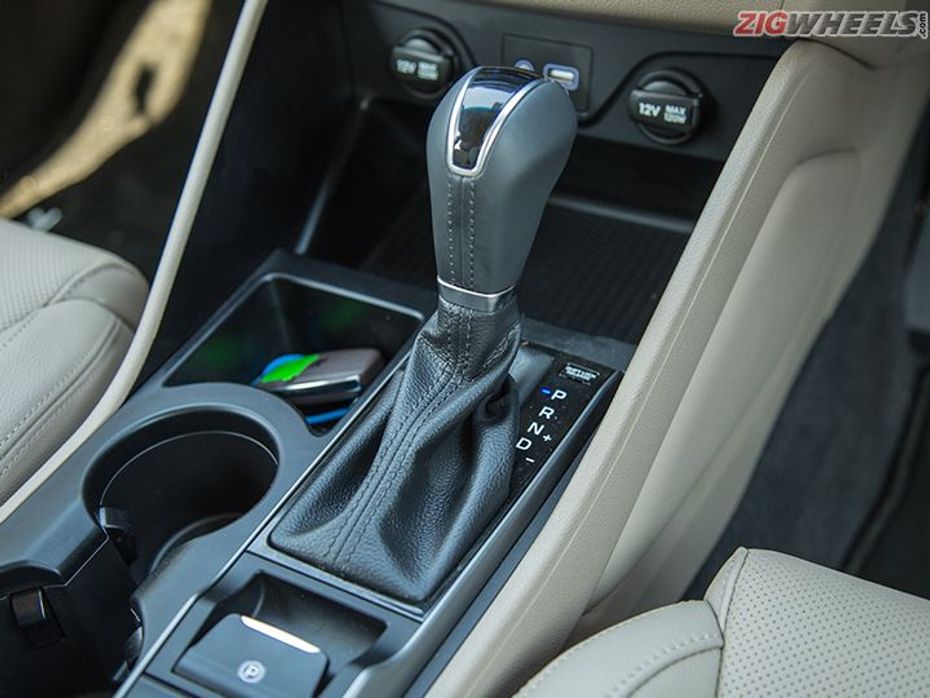
The 6-speed automatic gearbox is a traditional torque-converter and is not to an enthusiast’s taste. Gear changes are smooth, but it’s quite eager to upshift. Paddle-shifters? Nope, but it does have a manual mode, which definitely came in handy through the hills when we drove near Baddi in Himachal Pradesh. It doesn’t allow for very aggressive downshifts but holds the revs past 4,000rpm before upshifting automatically - more than enough. Overall, though, the powertrain is cruise-friendly and efficiency focused, with a claimed fuel-economy of 16.38kmpl. The automatic also gets the eco and sport drive modes. Eco sobers everything down for improved efficiency and works perfectly in the city, while Sport improves throttle sensitivity, adds a little weight to the steering and makes it more direct.
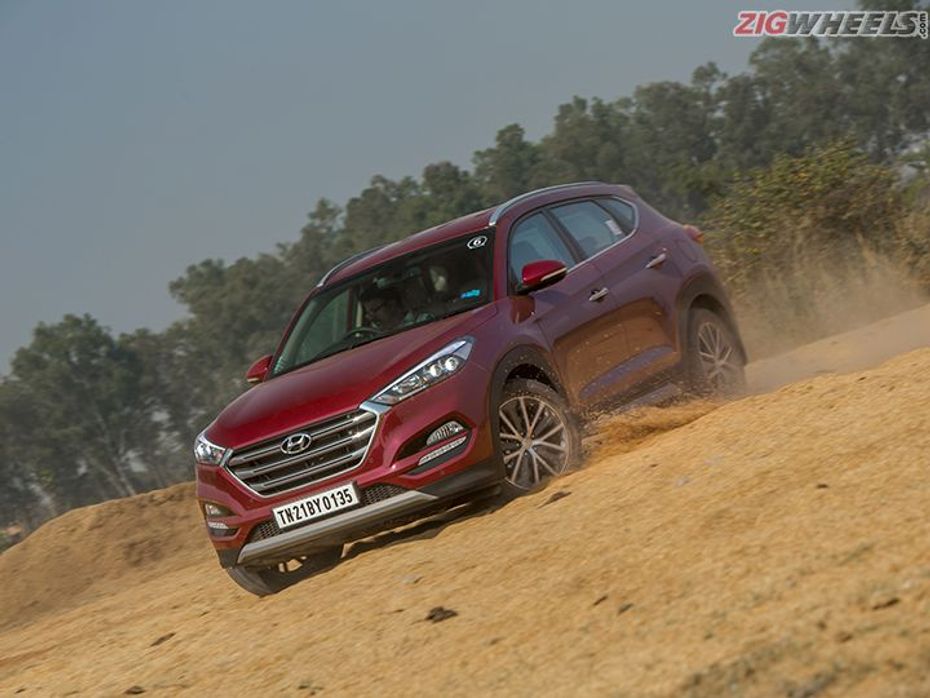
Ride and Handling
The Tucson has a high strength steel-intensive monocoque structure and dynamically, it’s quite sedan-like. So the ride quality is pliant and there isn’t much vertical bobbing either. Bad roads and potholes are dealt with effortlessly. Even though it rides on large 18-inch wheels, the large sidewalls keep things civil and it’s planted even at high speeds. The handling’s quite predictable too and it doesn’t feel top heavy, but body roll is noticeable through the corners. Thankfully, the steering, traditionally a weak point with Hyundais, is quite direct and reasonably communicative, but exit a corner too hot and the torque-steer can catch you off guard. With 4 wheel discs, there’s adequate stopping power, but like the Creta, the pedal has to be pressed a fair bit before the brakes bite.
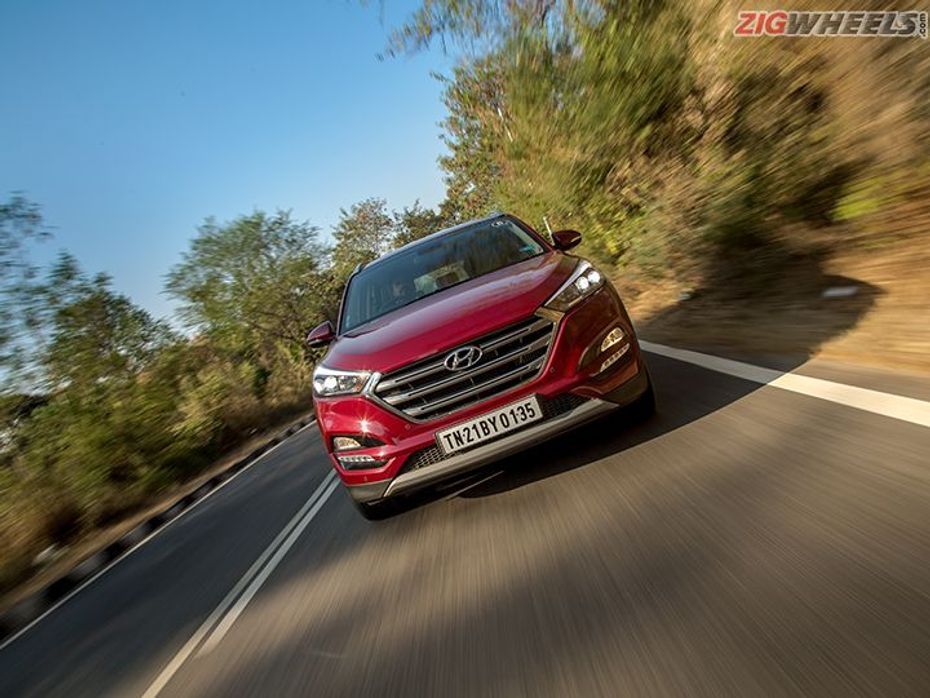
The Takeaway
So the answer to the questions we asked in the beginning would have to be, yes. With thousands of Creta/Duster/XUV500 and even executive sedan owners out there, you’d have to imagine they’ll upgrade at some point and not to something as hardcore as the Endeavour or Fortuner. They’ll want something feature loaded, not to mention, the option of a diesel which you don’t get with the CR-V. There’s also the appeal of the traditional SUV-look that you don’t get with the Skoda Yeti. The Tucson is a good upgrade, a well-packaged alternative and comes backed by Hyundai’s brand reputation.
It’s doesn’t excel at anything in particular, but it’s the best all-rounder in a segment that’s almost inexistent. Not only is it something you can safely buy, but something you can certainly recommend too.
India's largest automotive community
 Here Are Some Adrenaline Pumping Experiences From Auto Expo 2025 That You Should Not Miss!
Here Are Some Adrenaline Pumping Experiences From Auto Expo 2025 That You Should Not Miss!
 All You Need To Know About The Surprise Element At Auto Expo 2025: BMW iX1 LWB
All You Need To Know About The Surprise Element At Auto Expo 2025: BMW iX1 LWB
 Hyundai Creta Electric Reaches Dealerships, Here’s A List Of Its Pros And Cons Before You Check It Out!
Hyundai Creta Electric Reaches Dealerships, Here’s A List Of Its Pros And Cons Before You Check It Out!
 MG Showcases A PHEV At Auto Expo 2025: The MG HS PHEV
MG Showcases A PHEV At Auto Expo 2025: The MG HS PHEV
 Hyundai Creta
Rs. 11.10 Lakh
Hyundai Creta
Rs. 11.10 Lakh
 Hyundai Venue
Rs. 7.94 Lakh
Hyundai Venue
Rs. 7.94 Lakh
 Hyundai Verna
Rs. 11.07 Lakh
Hyundai Verna
Rs. 11.07 Lakh
 Hyundai i20
Rs. 7.04 Lakh
Hyundai i20
Rs. 7.04 Lakh
 Hyundai Exter
Rs. 5.99 Lakh
Hyundai Exter
Rs. 5.99 Lakh
 Hyundai Creta
Rs. 11.10 Lakh
Hyundai Creta
Rs. 11.10 Lakh
 Tata Punch
Rs. 5.99 Lakh
Tata Punch
Rs. 5.99 Lakh
 Mahindra Thar ROXX
Rs. 12.99 Lakh
Mahindra Thar ROXX
Rs. 12.99 Lakh
 Tata Nexon
Rs. 7.99 Lakh
Tata Nexon
Rs. 7.99 Lakh
 Mahindra XUV700
Rs. 13.99 Lakh
Mahindra XUV700
Rs. 13.99 Lakh